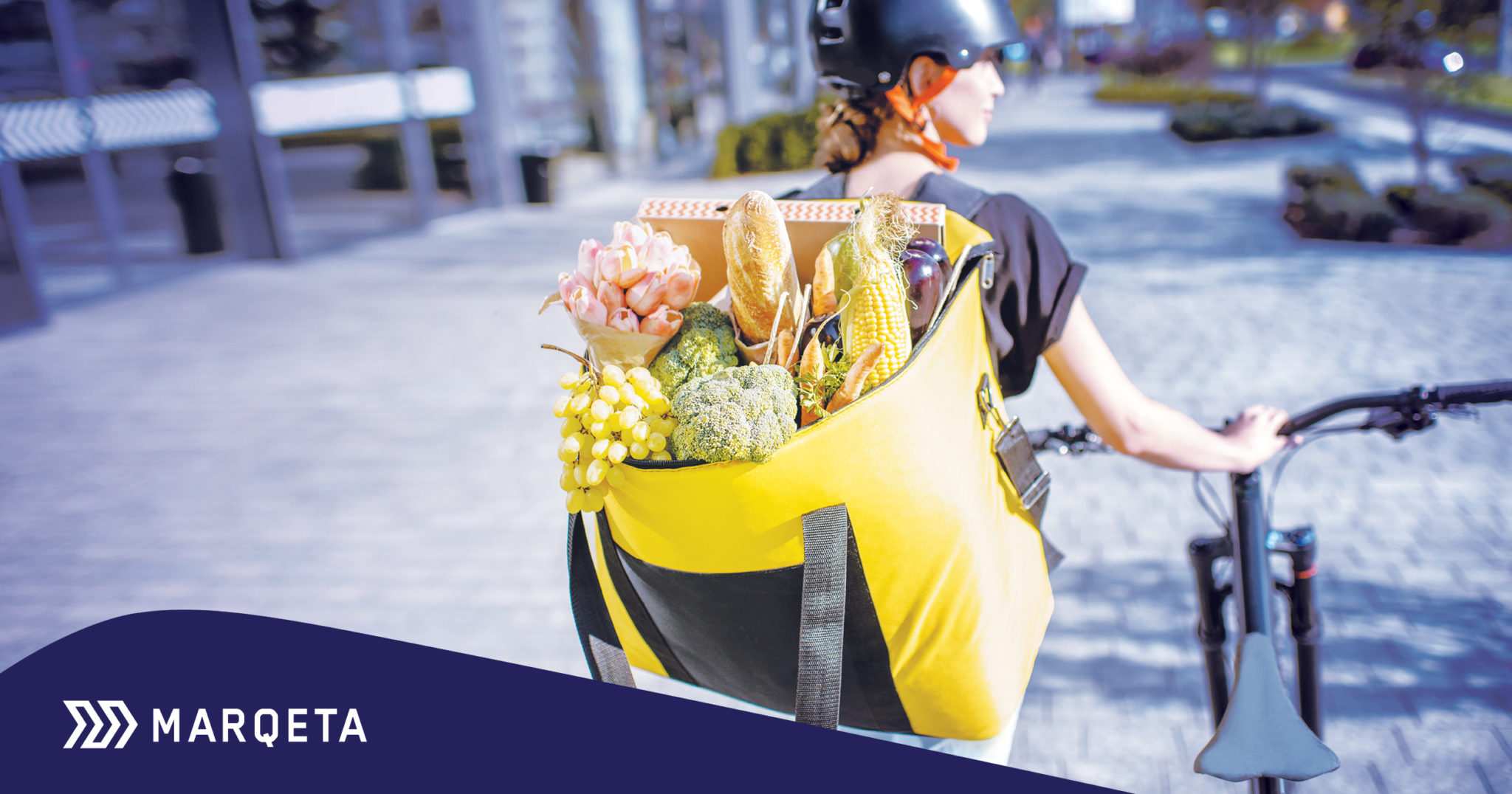April 9, 2020 | 5 min read
On-demand delivery responds to surge with safer payments



As the effort to contain and control the COVID-19 pandemic expands across the U.S., on-demand delivery companies are coping with a massive surge in orders from people sheltering in place.
According to Earnest Research, the surge started the first week of March when grocery delivery sales at Instacart, Amazon, and Walmart leaped by at least 66% from the previous year.1Associated Press, “Online Groceries Services Struggle to Meet Spike in Demand,” April 7, 2020 Rakuten Intelligence estimated a near-doubling of e-commerce sales of consumer packaged goods in the second week of March.2Wall Street Journal, “Groceries After the Age of Coronavirus,” by Aaron Back, March 25, 2020 Based on a survey of 300 American households by Gordon Haskett, about a third of consumers said they used an online grocery delivery service the week of March 17th, and more than 40% were first-time buyers.3Forbes, Blue Apron Stock Surges 70% As Groceries And Food Deliveries Spike Amid Coronavirus Crisis, by Andria Ching, March 17, 2020. Demand steepened as shelter in place orders were implemented in California and New York.
To meet the crush of orders, many companies are working 24/7 and scrambling to hire thousands of delivery drivers and operations associates. Among them is Instacart, who is adding 300,000 workers, along with DoorDash, Favor, Grubhub, Postmates, and Uber Eats.
Once hired, onboarding new workers with payment cards that are ready to transact with stores and restaurants right away is another challenge.
Setting up new workers with payment cards
On-demand delivery companies typically onboard new drivers via their apps. Once drivers pass a background check, they are often set up with branded payment cards to purchase items at grocery stores or restaurants. The faster these cards are in the hands of new drivers, the faster the drivers can begin fulfilling orders. When an on-demand delivery company is working with a modern card issuing platform and open APIs that empower customized payment systems, those cards can make it into the hands of the drivers instantly — if the payment card is virtual — and days if the company is using physical cards.
Take DoorDash, for example. DoorDash delivers food from thousands of restaurants in all fifty U.S. states, Canada, and Australia. When they want to onboard a new driver, the driver signs up via their app and a branded card — known by dashers as the Red Card — is immediately sent to their home address.
Older legacy platforms can slow the onboarding of new drivers by requiring complicated and lengthy processes to request new cards. Modern card issuing platforms with open APIs empower developers at on-demand delivery companies to build the card-issuing program with the features that work best for their business model.
Onboarding faster, more securely, and with worker protection
Modern card issuing platforms not only make it possible for on-demand delivery companies to get physical and virtual cards in the hands of new drivers quickly, they also add layers of security. This additional security is even more important now given reports of rising fraud. Features like Gateway JIT Funding enable on-demand delivery companies to process their own transactions in real time, allowing them to match each transaction to a customer order as it is authorized. Dynamic spend controls provide additional protection and restrict when, where, and how cards are used.
To minimize their drivers’ risk of exposure to viruses and germs, on-demand delivery companies like Instacart are leveraging platforms like Marqeta to provision payment cards directly to digital wallets. This makes it possible for drivers to tap and pay at a register without touching potentially contaminated surfaces. These contactless payments are faster than physical payment methods and reduce the amount of time drivers spend in-store.
Scaling to meet surge in on-demand delivery orders
As the coronavirus pandemic intensified from February to April, on-demand delivery companies have tested the scalability of all their systems and processes, including payments. At Marqeta, we worked closely with customers to ensure their payment infrastructure was capable of handling massive spikes in demand, including making sure hardware would be available when customers needed it, and also ordering plastic cards in advance for companies who preferred a physical payment method.
While our current global crisis is a reminder that some things in life are out of our control, it is also a chance to demonstrate what is most important to us as individuals and as a business. For Marqeta, that is standing behind our customers, and ensuring that their transactions are processed and that we are supporting them, their customers, and their employees in every way we can.
